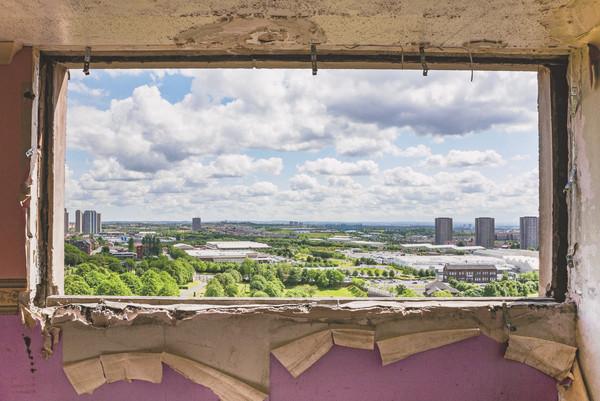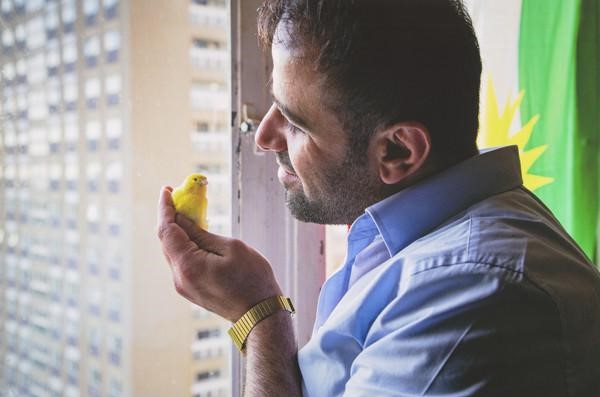‘Making space’

The Scottish National Portrait Gallery isn’t an immediately obvious place to host an exhibition of photographs of architecture, but there is an exciting resonance here. While the rest of the building is dedicated to representations of people, this exhibition comments on how physical space impacts people’s lives.
You don’t need a medical degree, nor even a Victoria Wood sketch of a medical school interview, to know that architecture can have a lasting impact on the life changes of individuals: poor housing exacerbates health inequalities, for example. Perhaps because of my profession, it was Chris Leslie’s photographs of Glasgow which particularly caught my eye.
We all know how the city’s 1960s towerblocks of ‘urban renewal’ turned out not to be a lasting solution, with many of the blocks being demolished after as little as forty years. It’s the backstory to any number of novels I’ve read in recent years if nothing else! Yet Leslie’s work brings home the human aspect of transforming the city’s landscape in a way that other representations haven’t. There is something about documentary photography that brings home the folly of the timescale and the impact of the displacement. It also made me wonder about the appalling ecological footprint of the schemes.
Leslie’s photograph Bird Man of Red Road drew out the social exclusion of the last residents of many of the flats, asylum seekers. I didn’t know of that particular temporary afterlife of the blocks, and it adds another strand to their story.
There was much more to contemplate in the exhibition, including a dizzying large-print photograph of a San Francisco lobby by Andreas Gursky, but I know that Leslie’s work will stay with me.

Making Space continues at the Scottish National Portrait Gallery until 3 March.
This post was filed under: Art, Andreas Gursky, Chris Leslie, Edinburgh, Glasgow, Scottish National Portrait Gallery.